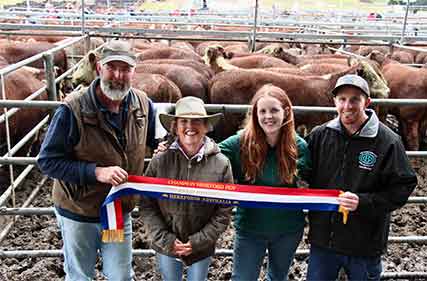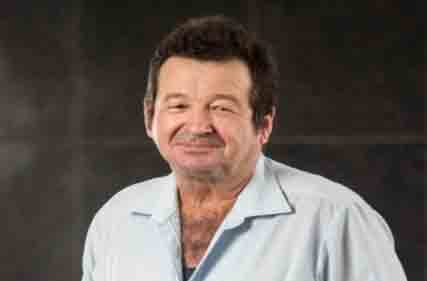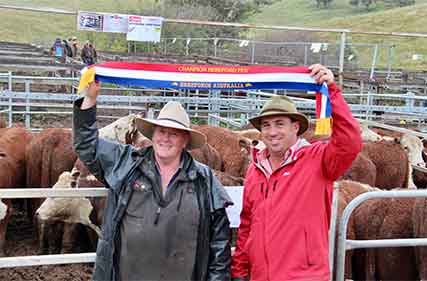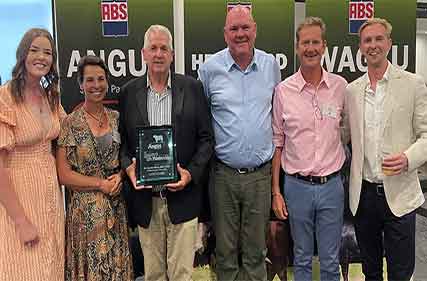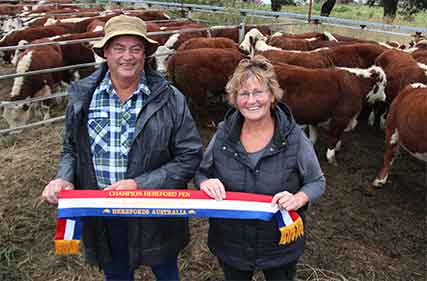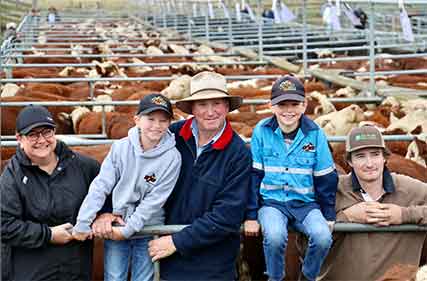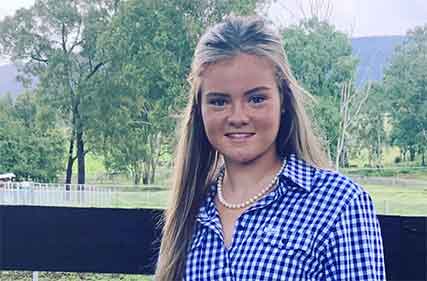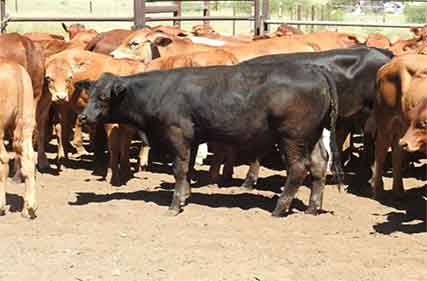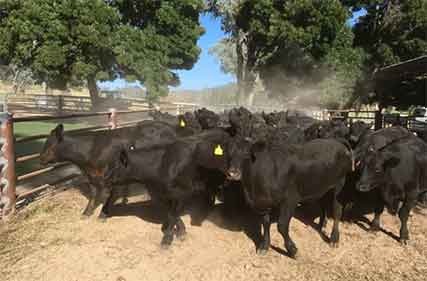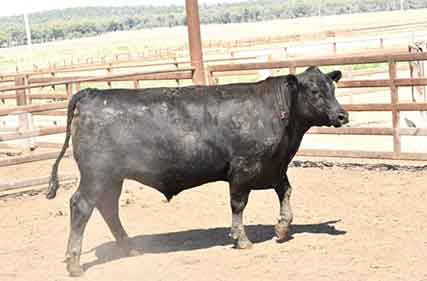
Heifer prices shoot into unchartered waters on back of demand
The spotlight well and truly shone on the females at the Omeo Weaner Sale where retockers paid a stellar $2900 for autumn drop Shorthorn/Hereford heifers, leaving the buying gallery and onlookers stunned.
Read More
Read More
Cattle Council lays out key priorities for federal election
Cattle Council of Australia has presented seven key priorities to MPs and candidates ahead of the 2022 Federal Election.
Read More
Read More
Hereford infused steers and heifers create buyer frenzy
Vendors were left open mouthed as buyers kicked up a gear at the Ensay Weaner Sale and lifted autumn drop steer prices by $130 on the Benambra Weaner Sale to top at $2780.
Read More
Read More
Bill Cornell honoured with life membership of Angus Australia
Bill Cornell was recently awarded Honorary Life Membership to Angus Australia, with the presentation taking place at the ABS Beef Conference in Tamworth on March 14.
Read More
Read More
Restockers and grass finishers set new records at Benambra
Steer finishers and restockers maintained the momentum to push autumn drop steer prices to a new record of $2650 and heifers to $2660 at the Benambra Weaner Sale.
Read More
Read More
Mountain Calf sale opener sizzles with a new record top of $3060
Vendors were all smiles as the opening salvo hit unchartered waters for whiteface yearling steers of $3060 and weaners of $2500 at the Benambra Calf Sale.
Read More
Read More
Bracks named as winner of coveted Norman Lethbridge Award
Bede Polding College graduate Emma Bracks has received the prestigious 2021 Norman Lethbridge Award presented by Angus NSW.
Read More
Read More
Steers and heifers both post rises as the market kicks again
Small average price declines for the 280-330kg and 400kg+ steer categories were overshadowed last week by sharp jumps in the remaining three steer categories, with 200-280kg liveweight lines averaging $158 higher on last week, at $1,959/head.
Read More
Read More
Direct and indirect impacts on global beef trade from Russia-Ukraine conflict
Global beef markets remain tight on strong ongoing consumer demand and constrained supply, however headwinds are building, Rabobank says in a newly-released report.
Read More
Read More
Most heavy young steer categories on the decline in price
Prices were slightly lower for three of the four heaviest young steer categories last week. Only 280-330kg steers averaged higher, edging $16 up, at $2,045/head – also registering the highest clearance rate, at 86%, for the 2,325 head offered.
Read More
Read More
New peak industry body for grass fed producers on track
Members of the Grass-fed Cattle Industry Restructure Steering Committee have appointed Andrew Macaulay to the position of Independent Chair, Steering Committee.
Read More
Read More
Angus entries dominate 2022 Beef Spectacular awards
Angus, as Angus and Influenced cattle again cleaned up when the prizes were handed out at the 2022 Beef Spectacular Awards.
Read More
Read More
